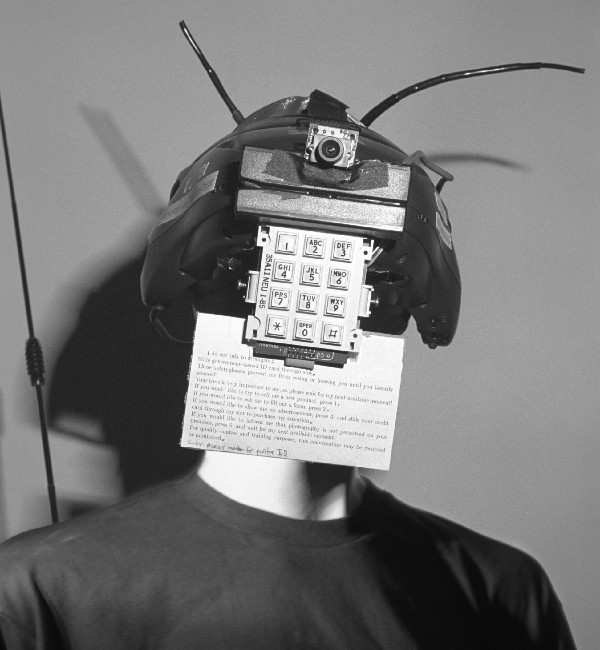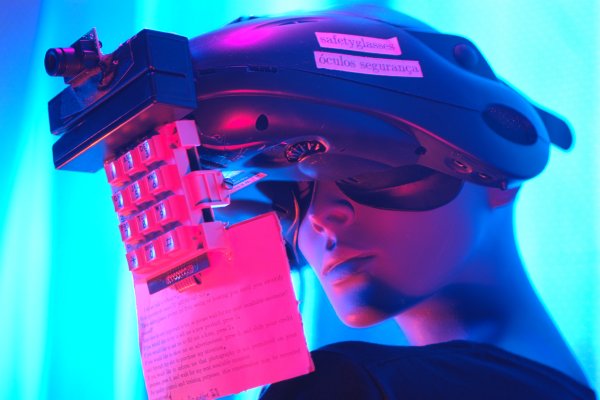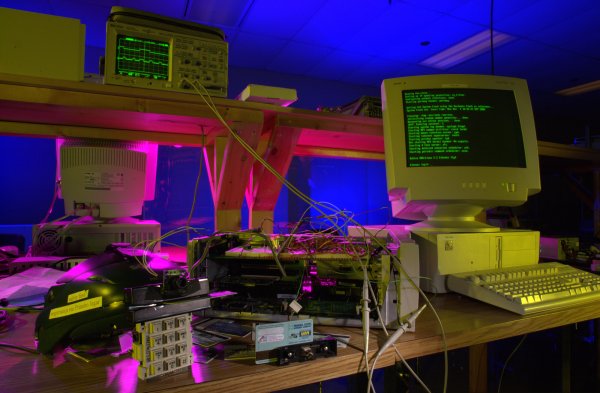

I do not talk to strangers.
Therefore you must slide a government-issued ID
card through the slot on my head if you want to talk to me.
These SAFETYGLASSES prevent me from seeing or hearing you until you
identify yourself!
Until you provide positive ID, the camera and microphones on my head will
not be connected to my head mounted display set.
Your time is very important to me, so please wait for my next available moment!
If you would like to try to sell me a new product, press 1.
If you would like to ask me to fill out a form, press 2.
If you would like to show me an advertisement, press 3, and
slide your credit card through my
slot to purchase my attention.
For quality-control and training purposes, this conversation may be
recorded or monitored.
If you would like to inform me that photography is not permitted on your
premises, press 9, and wait for my next available moment.
Keynote Address Invited by Professor Rejane Spitz, (Department of Arts, PUC-Rio University, Rio de Janeiro, Brazil), the South American Representative of ACM SIGGRAPH Education Committee, and the South American Representative of the ISEA organisation, and the curator of a show on Virtual Reality held at Centro Cultural Candido Mendes (Rio de Janeiro, Brazil) from 1-6 June 1998. (symposium + exhibition with audience of approximately 3.000 visitors).
I had originally met Professor Spitz during ISEA'97, at Chicago
Also, for those who can't remember how to hook it up at the exhibit: red and black are power (+5v); white is "card moving" (often incorrectly referred to as "card present"); blue is clock for track 1; brown is data for track 1; green is clock for track 2; yellow is data for track 2. Track 1 is closest to edge of card (innermost in reader). Clock goes to IRQ line of parallel port or isa bus (e.g. use IRQ 9 for track 1 and IRQ 10 for track 2 if you're using my wasteful and innefficient device driver example) for top half of interrupt service routine; unfortunately data is present on falling edge of clock so inverter needed if hooked to isa bus because IRQ going from low to high is what makes the top half happen. Bottom half should do the rest. If slow computer like a 486, make sure nothing else running, so it can service the interrupts, constant speed.
 PleaseWait being tested in the lab for undergraduate teaching
of card reader fundamentals
(bottom trace on scope shows clock, top trace shows data)
PleaseWait being tested in the lab for undergraduate teaching
of card reader fundamentals
(bottom trace on scope shows clock, top trace shows data)